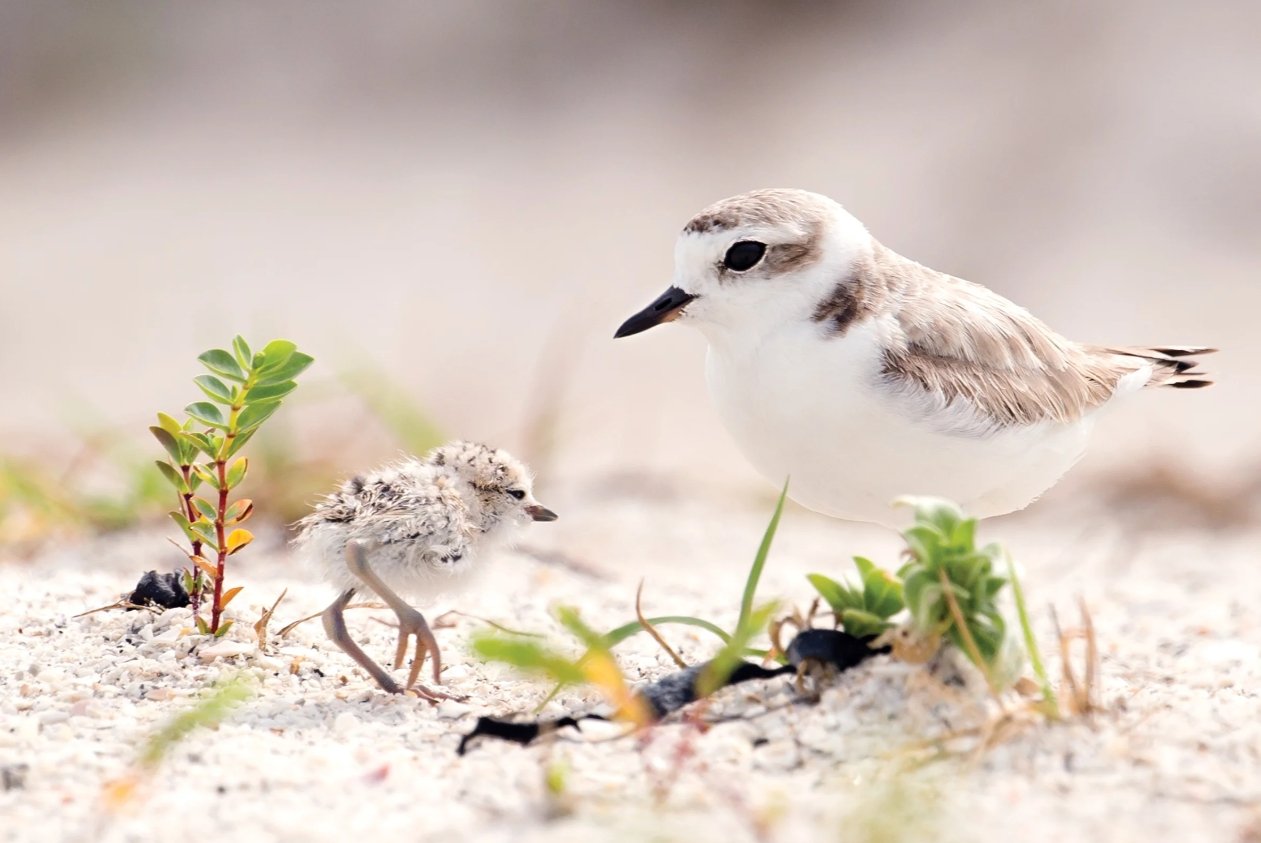Snowy Plover
Snowy Plover (Anarhynchus nivosus)
The snowy plover is one of the most charming inhabitants of the Punta Banda peninsula. These plump little round-headed shorebirds captivate those lucky enough to see them flitting about our local beaches on their tiny legs, capturing insects and marine invertebrates.
Snowy plovers can be identified by their pale brown upper body and white belly, with a black or brown partial collar and a short black bill. During the breeding season (March through September), males become more distinct with a blackish or dark brown mask and forehead patch, while females exhibit lighter, less defined markings.
One of the most special aspects of Lengueta Arenosa (“The Spit”) is that it provides a rare nesting ground for these endangered, ground-nesting birds. They lay their eggs in shallow depressions in the sand and rely on camouflage to ensure the safety of their offspring.
Each spring the snowy plovers begin their breeding behavior as the male attracts a female using his distinct color markings, and makes a display by scraping small depressions in the sand. The female then chooses one of these scrapes to lay her eggs in. Incubation of the eggs is a shared responsibility, with both males and females taking turns to keep the eggs warm. However, after the chicks hatch, the females usually leave the brood care to the males. This shift in parental roles allows females to mate with other males and lay more eggs, maximizing their reproductive success.
When a predator approaches their nest, Snowy Plovers often pretend to have a broken wing, luring the predator away from the nest. Once the threat is sufficiently far from their offspring, the bird quickly flies away.
Snowy Plovers have a preference for wide, sandy beaches, salt flats, and alkaline lakes. These habitats provide an abundance of their preferred diet and offer the camouflage necessary for their survival strategy. Moreover, the vast openness of these spaces allows the birds to spot approaching predators in time to perform their "broken-wing" act and protect their offspring.
Unfortunately, the Snowy Plover's nesting sites are often prime locations for human recreational activities. The birds and their eggs are frequently disturbed or destroyed by unsuspecting beachgoers, leading to a decline in their population in many regions. Conservation measures such as beach closures during nesting season, temporary fencing and cages around nests, and public education campaigns are essential to protect these unique birds and their habitats.
At Lengueta Arenosa, Pro Esteros and local biologists work diligently to track and protect the snowy plover nests. During the month of May, Pro Esteros carries out a large group effort to restore habitat by removing exotic vegetation, and to install temporary fencing around nesting areas. John Kinabrew, La Alianza member and local resident, is a remarkable steward for the snowy plovers nesting in the more heavily traveled areas of the beach in the vicinity of homes. John diligently searches for nests, protects them with temporary cages and fencing, and collects data for the snowy plover biologists.
It is vital for locals to be aware of these vulnerable beach inhabitants, keeping their dogs on leashes and refraining from driving vehicles where they nest. That way, we can continue to share the beautiful beaches with these remarkable little birds for generations to come.


